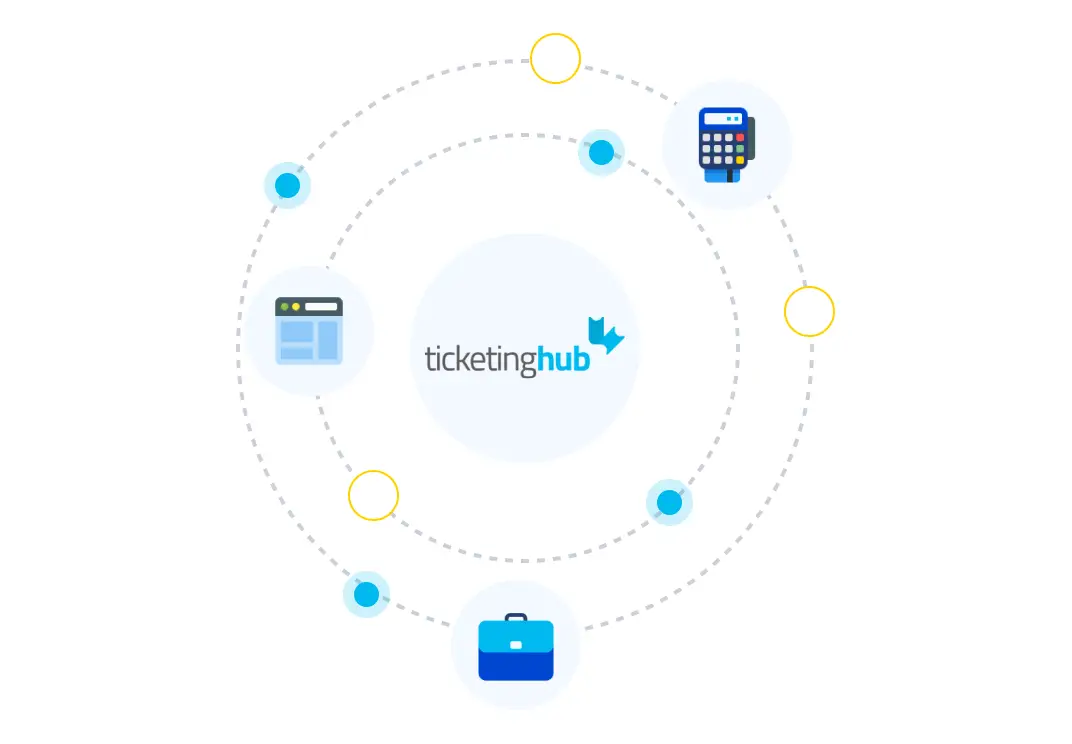Are you looking for business tips for tour business owners? Or are you a tour business owner seeking to elevate your venture to new heights?
As a tour business owner, embarking on the journey of entrepreneurship can be both exhilarating and challenging. The local tourism board and industry is dynamic and competitive, requiring a strategic approach to stand out and thrive.
To help you navigate this dynamic industry, we've compiled a comprehensive guide of essential business tips tailored specifically for tour business owners like you. From crafting captivating experiences to optimizing your marketing strategy, let's embark on a journey toward business success together!
Whether you're just starting or looking to take your tour business to the next level, mastering essential business tips can pave the way for success. In this blog, we will navigate through some crucial strategies to help you steer your tour business toward prosperity.
Craft Unforgettable Experiences

At the heart of any successful tour business lies the ability to deliver unforgettable experiences to your customers.
Whether it's a guided historical tour, an adrenaline-pumping adventure excursion, or a leisurely sightseeing journey, your tours should leave a lasting impression on participants.
Here's how to make it happen:
Personalize Your Offerings
Understand your full target market and audience and tailor your tours to cater to their interests and preferences. Whether it's family-friendly activities, niche cultural experiences, or eco-friendly adventures, customization adds value and enhances customer satisfaction.
If your tour business operates in a city known for its historical landmarks, consider offering specialized tours focusing on different eras or themes, such as the "Victorian Architecture Tour" or "Revolutionary War History Tour." Tailor the content and stops along the route to cater to the interests of history buffs, architecture enthusiasts, or families with children.
Train and Empower Your Guides
Develop a comprehensive training program for your tour guides that covers not only historical or factual information but also includes techniques for storytelling, crowd management, and customer interaction. Empower guides to make real-time decisions based on group dynamics and unexpected situations to ensure a seamless and engaging experience for participants.
Focus on Quality Over Quantity
Limit the number of participants per tour to maintain a personalized experience. For example, if you operate nature tours in national parks, consider offering small-group tours led by expert naturalists or biologists to provide in-depth insights into the local flora and fauna. Then, emphasize the importance of leaving no trace and respecting wildlife habitats to minimize environmental impact.
In line with that, you can keep a close eye on your finances, tracking revenue, expenses, and profitability metrics. So, you may set clear financial goals and develop a budget to guide your spending decisions.
Also, you may want to explore ways to diversify your revenue streams, such as offering merchandise or partnering with local artisans to sell souvenirs. Consider seeking professional advice from accountants or financial advisors to optimize your financial strategy and mitigate risks.
Build Strong Partnerships

Collaboration is key in the tour business industry. Establishing strategic partnerships with other businesses and organizations can open up new opportunities and enhance the overall quality of your offerings.
Here's how to foster meaningful partnerships:
Forge Relationships with Local Suppliers
From transportation companies and accommodations to local attractions and restaurants, establish partnerships with reliable suppliers who share your commitment to excellence. Negotiate mutually beneficial agreements to secure preferential rates and streamline logistics.
Collaborate with Complementary Businesses
Identify businesses that complement your offerings without directly competing with you. For example, if you specialize in adventure tours, partner with a top insurance company or local photography studio to offer professional photo packages to your customers.
Networking and forging strategic partnerships can open doors to new opportunities and widen your reach. You can attend industry events, conferences, and trade shows to connect with fellow professionals and stay abreast of industry trends. Cultivating relationships with suppliers and vendors can also lead to cost savings and enhanced service quality.
Engage with the Community
Get involved in community events, sponsor local initiatives, and support charitable causes. Building strong ties within the community not only fosters goodwill but also helps raise awareness of your business and attract potential customers.
Harness the Power of Digital Marketing in Your Tour Company

In today's digital age, a robust online presence is essential for attracting customers and staying ahead of the competition.
Here are some digital marketing tips to help you reach your target audience effectively:
Optimize Your Website
Your website serves as the virtual storefront for your tour business. You can ensure it is visually appealing, user-friendly, and optimized for mobile devices.
Also, you may provide detailed information about your tours, pricing, and booking options, and incorporate high-quality images and engaging content to capture visitors' attention.
Utilize Social Media Platforms
You can leverage social media platforms such as Facebook, Instagram, and Twitter to connect with your audience, showcase your tours, and engage in meaningful conversations.
Also, share captivating photos and videos, run contests and promotions, and encourage satisfied customers to leave reviews and testimonials.
Invest in Paid Advertising
Consider investing in paid advertising campaigns on platforms like Google Ads and Facebook Ads to expand your reach and target specific demographics. Monitor your campaigns closely, analyze performance metrics, and adjust your strategies as needed to maximize ROI.
Prioritize Sustainability and Responsible Tourism

As stewards of the environment and custodians of cultural heritage, tour business owners have a responsibility to prioritize sustainability and promote responsible tourism practices.
Here's how you can make a positive impact:
Minimize Environmental Footprint
Implement eco-friendly initiatives such as reducing single-use plastics, conserving energy and water, and promoting recycling and waste reduction. Choose suppliers and partners who share your commitment to environmental sustainability.
Respect Local Communities and Cultures
Educate your staff and customers about the importance of respecting local customs, traditions, and cultural norms. Then, encourage responsible behavior, such as refraining from littering, obeying local laws and regulations, and supporting local artisans and businesses.
In line with that, you can implement scalable systems and processes to streamline booking, payment, and customer service operations. Also, prioritize staff training and development to ensure consistent service quality and customer satisfaction.
Customer service is an integral part of the business. Exceptional customer experiences can turn first-time visitors into repeat customers and brand advocates.
So, you can instruct your staff to deliver personalized service and handle customer inquiries and complaints with professionalism and empathy. Also, you can encourage a culture of continuous improvement
Support Conservation Efforts
Partner with conservation organizations and participate in initiatives aimed at protecting natural habitats and preserving wildlife. Offer educational experiences and marketing efforts that raise awareness of environmental issues and inspire conservation action among your customers.
Stay Agile and Adapt to Change

In the fast-paced world of tourism, adaptability is key to staying ahead of the curve. Keep an eye on industry trends, technological advancements, and changing consumer preferences, and be prepared to pivot your business strategies accordingly.
Here's how to stay agile:
Embrace Innovation
Explore innovative technologies and trends that can enhance the customer experience and streamline your operations.
Whether it's implementing virtual reality tours, adopting mobile ticketing solutions, or integrating artificial intelligence chatbots, embrace new tools and platforms that can give you a competitive edge.
Innovation, really, is the key to staying ahead in the competitive tourism industry. Continuously seek feedback from customers and adapt your offerings based on their preferences and evolving trends.
It is important to embrace technology trends such as virtual reality (VR) tours or mobile apps to enhance the tour experience and cater to tech-savvy travelers. Stay agile and willing to experiment with new ideas to keep your tourism business both fresh and relevant.
Collect and Analyze Data
Leverage data analytics tools to gather insights into customer behavior, preferences, and booking patterns. You can also use this information to optimize your marketing campaigns, refine your tour offerings, and identify opportunities for growth.
Seek Feedback and Iterate
You can encourage feedback from your customers through surveys, reviews, and direct communication channels. Listen attentively to their suggestions and concerns, and be willing to iterate and improve based on their input.
Additionally, demonstrating a commitment to continuous improvement fosters loyalty and strengthens your reputation as a customer-centric business.
Visual Content
One effective way is to integrate high-quality images, videos, and infographics throughout your blog post to break up the text and make it more visually appealing. You can also include captivating photos of tour destinations, behind-the-scenes snapshots of your business operations, and informative graphics highlighting key statistics or tips.
Testimonials and Case Studies
Feature testimonials from satisfied customers or case studies highlighting successful tour experiences to build credibility and trust with your audience. Include quotes, photos, or videos from past participants sharing their positive experiences and recommendations.
Interactive Elements
Incorporate interactive elements such as quizzes, polls, or interactive maps to engage readers and encourage participation. For example, create a quiz to help readers discover their ideal tour destination or allow them to vote on their favorite tour activity.
Call-to-Action (CTA)
You can include clear and compelling calls-to-action throughout your blog post to encourage readers to take the next step, whether it's booking a tour, subscribing to your email list, or following you on social media.
Also, you may use actionable language and strategically place CTAs to guide readers toward conversion.
FAQ Section
You may anticipate common questions or concerns that potential customers may have about your tours and address them in a dedicated FAQ section. Provide clear and informative answers to help alleviate any doubts or uncertainties and facilitate the booking process.
Interactive Map
Embed an interactive map showcasing the locations of your tours, key landmarks, and points of interest. Allow readers to explore different tour routes, view photos or descriptions of tour stops, and access additional information about each destination.
Resource Section
Create a resource section at the end of your blog post featuring links to relevant websites, articles, books, or tools related to tour planning, travel tips, or destination guides. Provide valuable resources that readers can explore further to enhance their travel experiences.
Social Proof
Showcase social proof in the form of your social media posts and widgets displaying your latest Instagram posts, Twitter feeds, or Facebook reviews. Highlight user-generated content and positive feedback from satisfied customers to build credibility and reinforce your brand's reputation.
Behind-the-Scenes Content
Offer readers a glimpse behind the scenes of your tour business by sharing stories, anecdotes, or photos showcasing the people, places, and experiences that make your tours unique. Provide insights into your company culture, values, and commitment to delivering exceptional customer service.
Engagement Opportunities
Encourage reader engagement by inviting them to leave comments, share their own travel experiences, or participate in discussions related to the blog topic. Respond promptly to comments and foster a sense of community among your audience.
You can also build an engaging website that showcases your tours with captivating visuals and informative content. Optimize your site for search engines to improve visibility and drive organic traffic. Engaging in online conversations and responding promptly to inquiries can enhance your credibility and attract more bookings.
By implementing these practical examples, tour business owners can enhance the quality of their offerings, foster strong partnerships, leverage digital marketing strategies, promote sustainability and responsible tourism practices, and stay agile in the face of change. Thus, tour operators can position themselves for long-term success and growth in the competitive tourism market.
Ticketinghub : la clé du succès d'une activité de tour-opérateur

Le logiciel de réservation de Ticketinghub propose une suite complète de fonctionnalités conçues pour rationaliser le processus de réservation et améliorer l'expérience touristique des voyagistes et de leurs clients. Examinons les principales fonctionnalités du logiciel Ticketinghub et explorons quelques conseils commerciaux à l'intention des propriétaires d'entreprises touristiques pour tirer parti de ces fonctionnalités efficacement.
Interface conviviale : Le logiciel de Ticketinghub est doté d'une interface utilisateur intuitive qui permet aux voyagistes de gérer facilement les réservations, de créer de nouvelles visites et de mettre à jour les disponibilités. Pour les voyagistes, le fait de s'assurer que le système et le processus de réservation en ligne sont fluides et simples améliore la satisfaction des clients et encourage la fidélisation des clients.
Pages de réservation personnalisables : Le logiciel permet aux voyagistes de créer des pages de réservation personnalisables qui reflètent l'identité de leur marque et fournissent des informations essentielles sur leurs visites. Les propriétaires d'entreprise peuvent tirer parti de cette fonctionnalité pour présenter leurs offres uniques et attirer des clients potentiels.
Options de billetterie flexibles : Le logiciel de Ticketinghub prend en charge diverses options de billetterie, notamment des visites à date fixe, des réservations en ligne, des horaires flexibles et des réservations privées. La flexibilité des options de billetterie permet aux voyagistes de répondre aux différentes préférences des clients et de maximiser les opportunités de réservation.
Mises à jour de disponibilité en temps réel Grâce à des mises à jour de disponibilité en temps réel, les voyagistes peuvent s'assurer que les clients ont accès aux dernières informations sur la disponibilité des visites. Cette fonctionnalité permet de minimiser le risque de surréservation et offre aux clients la tranquillité d'esprit en sachant que le créneau de leur choix est disponible.
Traitement des paiements intégré : Le logiciel s'intègre aux passerelles de paiement les plus populaires, permettant aux voyagistes et aux agences de voyages en ligne d'accepter les paiements en ligne sécurisés des clients. Il est essentiel de proposer de multiples options de paiement et de garantir la sécurité des transactions pour renforcer la confiance et encourager les conversions.
L'importance de suivre ces conseils

Il est primordial de poser des bases solides. Vous pouvez commencer par définir votre niche et votre public cible. Identifiez ce qui distingue vos circuits de ceux de vos concurrents et adaptez vos offres aux besoins et aux intérêts du groupe démographique que vous avez choisi.
Qu'il s'agisse de voyages d'aventure, d'expériences culturelles ou d'excursions respectueuses de l'environnement, le fait de vous tailler une place peut vous permettre de différencier votre entreprise et d'attirer des clients fidèles.
Une fois que vous avez défini votre créneau, vous pouvez investir dans la création d'une identité de marque convaincante. Votre marque est bien plus qu'un simple logo ; elle englobe vos valeurs, votre mission et l'expérience que vous promettez d'offrir.
En outre, vous pouvez développer une voix de marque forte et garantir la cohérence sur tous les points de contact, qu'il s'agisse de votre site Web, de vos supports marketing ou des interactions avec les clients. Une histoire et une identité de marque cohérentes renforcent la confiance et fidélisent les clients.
Conclusion
La gestion d'une entreprise de voyages réussie nécessite une combinaison de créativité, de collaboration et d'adaptabilité.
En créant des expériences inoubliables, en établissant des partenariats solides, en exploitant la puissance du marketing numérique, en donnant la priorité à la durabilité et en restant agile face au changement, vous pouvez mettre votre entreprise sur la voie du succès à long terme.





